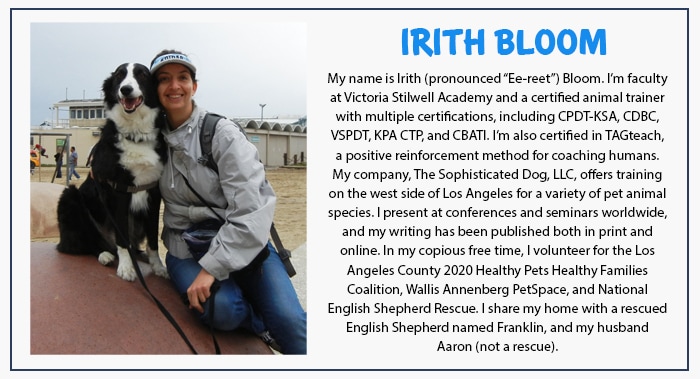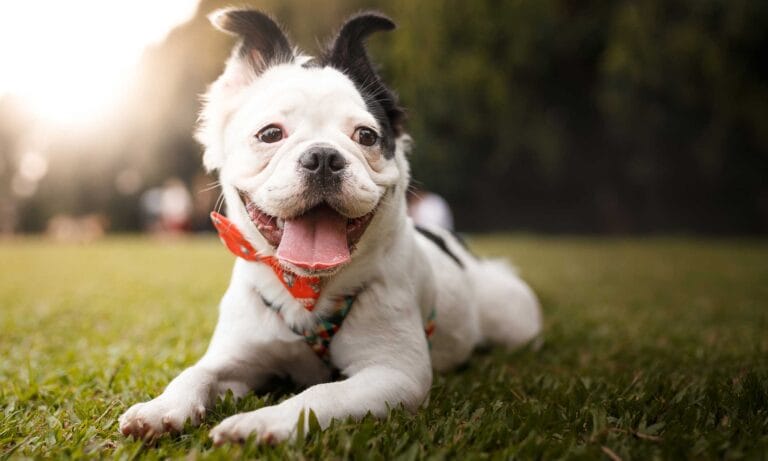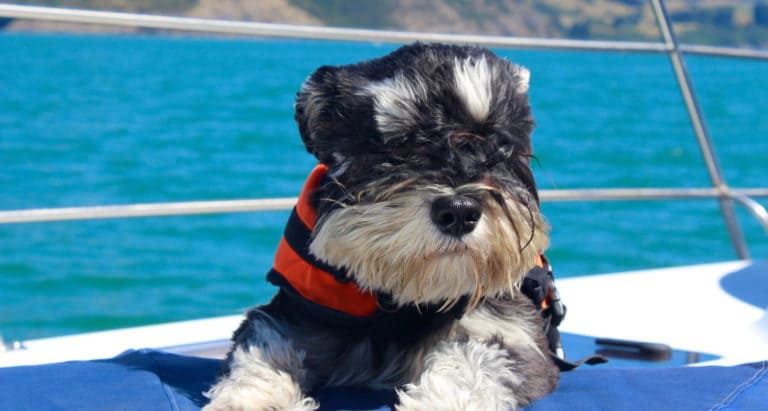Swimming is a great way for dogs and their humans to cool off on a hot summer day. But contrary to popular belief, not all dogs are naturals when it comes to swimming. So, before jumping in (the water’s fine!), learn how to teach a dog to swim and what to keep in mind for pool safety.
Dog Swimming: Safety First
When it comes to dog swimming, people tend to assume that any dog can do it. But some dogs have a pretty difficult time staying afloat, especially if they haven’t done much swimming before.
Not all dogs swim naturally, and the less body fat they have, the harder it is for them to float. If your pooch is new to swimming—or if he’s young, old, weak or just plain skinny—it might be hard for him to keep his head above the water.
To help keep your dog safe, dress him in a dog life jacket, such as the Frisco Neoprene dog life jacket, before you introduce him to the pool. Acquaint your canine companion with his life jacket before going in the water and practice putting it on and taking it off in a safe, dry area so he’s used to it.
How to Teach Your Dog to Swim in a Pool
1. Teach your dog to get in and out of the pool.
When it comes to dog swimming, the most dangerous thing about pools is that, unlike streams and lakes, they don’t gradually slope up to ground level. Instead, there are ladders and steps to exit the pool. Your dog probably can’t go up a ladder, but most dogs can learn to use steps—as long as they know where to find the steps, that is!
The first step in teaching a dog to swim in a pool is teaching him to walk up and down the pool steps. You can get most dogs up and down the steps easily by luring them with dog treats, such as True Acre Foods baked biscuits, which come in a variety of flavors.
Note: If your dog won’t follow a food lure into the pool, it might be because he doesn’t like the water. If you didn’t like the water, you probably wouldn’t like being forced into the pool, right? If the pool doesn’t interest your dog, don’t force him into it.
2. Keep the first few pool playtimes short.
Like humans, dogs need to build up their strength when they start a new exercise. While most dogs will swim naturally, the dog paddle is not the same as a trot or a run on land. Dogs use their muscles differently in the dog paddle, so they can tire quickly when first learning to swim.
Limit the first dog swimming session to about five minutes, and stay in the pool with your dog so you can help direct him to the stairs if he gets tired. A panicked dog might swim to the wrong side of the pool or swim around in circles with no idea how to get out. To help your dog find the steps in your pool, put a cone or flag near the steps as a sort of “signpost” for the first few weeks your dog is using the pool. You can build up pool time from there.
If you decide to combine swim time with playtime, do so carefully. When dogs jump into the water after a toy, they naturally tend to sink deeper underwater than if they walk in, so it’s important to make sure they are comfortable before you try that level of dog swimming.
Never throw your dog into the pool! Even if he doesn’t hit the side or bottom of the pool on the way in, he might panic and sink.
3. Create a routine for after your dog exits the pool.
When your pooch is done with the pool, staying wet can be uncomfortable and might cause his fur to mat. Water also can get in your pet’s ears. To minimize possible ill effects after pool time, rinse your dog with a hose after every swim to get chlorine off his coat. Then use an absorbent towel, like Bone Dry’s embroidered paw print microfiber bath towel, to dry off your dog. Finally, clean his ears out with Virbac Epi-Otic Advanced ear cleaner to make sure all the chlorine and any debris is gone.
Note: Only bathe your dog once in a while or as recommended by your vet, because too much shampoo can irritate his skin. Get tips for making dog bath time less stressful.
Summertime in the pool with a dog can be great fun. Help keep your dog happy, safe and healthy during dog swimming season by following the guidelines above. Consult your veterinarian or a groomer to figure out how often to bathe your dog, based on his coat and individual needs.
Read More

Share:













